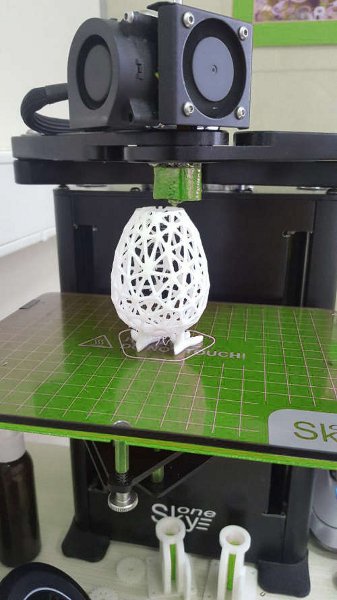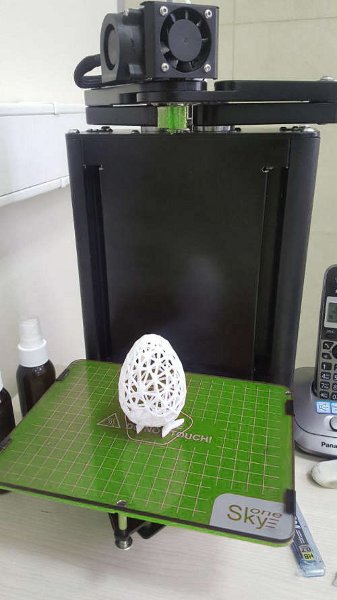3D - Easter. A wonder a wonder with own hands or 3D printing reality.
3D printing is not any more a phantasy. 3D printing became a reality of our everyday routine. The public of 3D printer users is growing up with frantic pace. The most of them highly appreciate all attractions of additive technologies and of 3D printing particularly.
In this article let's try to understand, why 3D printing is so interesting and how usefull it could be for our modern life. We will try to single out a user community and to find an advantages for every of publics.
My professional activity is closly related to development of automated industrial processes. That's exactly why on my operation experience in this sphere, i can single out the first public, who use additive technologies in industrial automation.
Ever since I began to use my first SkyOne for solution of simple small-batch tasks (producing a transmission prototype, a bracket, any hard component or case), it gave up to be my headache about where and how to cope with the task. Now i can eliminate an error and gain time. With the agency of a case prototype printing, i can assure that the selected properties are correct: dimensions, fastener holes position, design and even the color. Design and printing of brackets or other holding elements allow producing and assembling the construction with a requested rigidity on condition that the printing parameters are chosen correctly. It is obvious, that 3D technologies are usefull for tasks solving, further to save time and money. It is very important for work processes. My 3D printer is not a simple assistant, it helps me earn money.
The next public uses 3D printing in their everyday life. Up to now many people ask a question, how 3D printing can be useful in everyday life? The first that comes into a head of a potential user, who just has begun to try using 3D technologies, is printing of different ready models from available databases. It could be decoration elements, supports, trinkets, covers for phones and a plenty of the same things.
Variety and development of technology and printing materials continuously widen the public. With the help of a 3D printer it is possible to equip a place of work in a garage with a workbench, or a table-type workshop for a student or a pupil. Development of rubber-like plastics gave a chance to print resine items, prototypes of sealers and dust caps, draught strips and couplers for household devices.
It used to seem unusual to print baking cases for pastry cooking. But now it is possible to taste a pancake, printed on a 3D printer. More and more people use 3D printers for materialization of their ideas. It can be a house made from cement (a printed plastic miniature could be examined in advance), a prototype of a future building, a street or a landscape. Design of toy figures and games, or a bar of a kite control. All these examples prove that 3D printing enters our everyday hobbies and attractions. On my opinion, this is another group of public who uses 3D printers.



Additive technologies and printing let us a chance to embody materialise an idea, to correct a mistake in design, to deliver on an appearance, to make a new detail to replace an old broken one, to add a decoration or to materialise a bethink item. It is clear, that additive technology comes deeply into our routine - to home, schools, workplaces or universities.